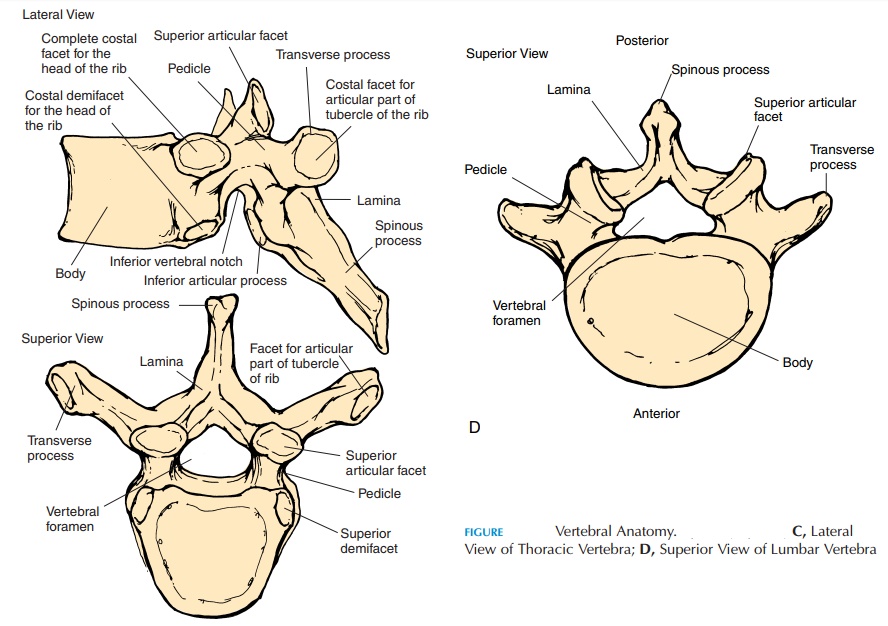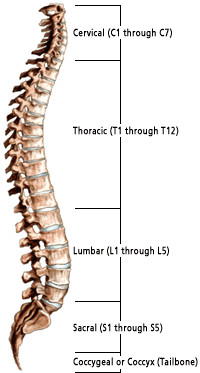

Unfortunately, spinal injuries may result in some messages never reaching their destination.ĭiscs between the vertebrae act as cushions to prevent bones from grinding against each other. The spine is a column of bones that work together to house the spinal cord, our nervous system’s “superhighway.” Messages travel from the brain, down the spine and out through the peripheral nerves, think smaller highways and city streets. Here, we break down the main parts of the spine. Understanding the parts of the spine can give you a better idea of what to look out for when it comes to pain or injury. These bones make up the spinal column that holds your body upright, allows it to twist and bend and provides a safe channel for nerves to run from the brain throughout your body. The spine is composed of 33 bones, called vertebrae, divided into five sections.
REGIONS OF THE SPINE SERIES
It is an incredibly complex series of bones, joints and other tissues.

Composed of tendons, the rotator cuff and associated muscles hold the ball tightly within the glenohumeral joint at the top of the upper arm bone (humerus).Your spine is unlike any other part of your body. A closed space between 2 moving surfaces that has a small amount of lubricating fluid inside located between the rotator cuff muscle layer and the outer layer of large, bulky muscles.

These help support and rotate the shoulder in many directions.īursa. The rotator cuff tendons are a group of tendons that connect the deepest layer of muscles to the humerus. The tough cords of tissue that connect muscles to bones. The roof (highest point) of the shoulder that is formed by a part of the scapula. Ligaments that connect the clavicle to the scapula by attaching to the coracoid processĪcromion. Ligaments that attach the clavicle to the acromion The joint capsule is a group of ligaments that connect the humerus to the socket of the shoulder joint on the scapula to stabilize the shoulder and keep it from dislocating. A white, shiny, flexible band of fibrous tissue that holds joints together and connects the various bones, including the following: A ball-and-socket joint that facilitates forward, circular, and backward movement of the shoulder. This is where the clavicle meets the acromion. This is where the clavicle meets the sternum.Īcromioclavicular (AC) joint. These facilitate movement and include the following: These include the collarbone (clavicle), the shoulder blade (scapula), and the upper arm bone (humerus). The shoulder is made up of several layers, including the following:īones. This is the part of the pelvis that forms the hip joint. This is the lower, anterior or front part of the pelvis. This is the broad, flaring portion of the pelvis. This is formed by the fusion of 4 originally separated coccygeal bones.

A spade-shaped bone that is formed by the fusion of 5 originally separate sacral vertebrae.Ĭoccyx (also called the tail bone). The pelvis is a basin-shaped structure that supports the spinal column and protects the abdominal organs. (* By adulthood, the 5 sacral vertebrae fuse to form 1 bone, and the 4 coccygeal vertebrae fuse to form 1 bone.) Facts about the pelvis The cervical area consists of 7 bony parts in the neck the thoracic spine consists of 12 bony parts in the back area the lumbar spine consists of 5 bony segments in the lower back area 5 sacral* bones and 4 coccygeal* bones (the number of coccygeal bones can vary from 3 to 5). The vertebral column, also called the spine or backbone, is made up of multiple vertebrae that are separated by spongy disks and classified into 4 distinct areas.


 0 kommentar(er)
0 kommentar(er)
